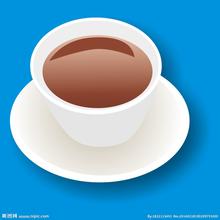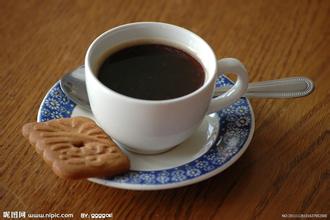Introduction to the varieties of coffee flavor and taste in Yega Sheffield Cochel Manor with long aftertaste and mellow thickness
China Coffee Network Chelba is a boutique coffee and raw bean cooperative located in the Gedeo area of Yejasuefei. There are about 700 smallholder growers in the Gedeo area who send the harvested coffee fruits to the Chelba cooperative's processing plant for centralized processing. The average planting area of these small growers is 2 hectares. The total area of coffee cultivation in this area is about 888 hectares. The planting height is 1900 to 2100 meters above sea level. The local climate is suitable, with a temperature of 25 ℃ during the day and 18 ℃ at night. They plant coffee trees next to self-sufficient crops and crops that raise livestock. The main local shading tree species are: Acacia, Luohansong and so on.
The processing plant of the Chelba cooperative mainly deals with coffee fruits harvested by surrounding farmers. Before dealing with coffee fruit, Chelba will ask farmers to pick coffee fruit according to strict standards, they only pick ripe red fruit. This is a very critical quality control link for boutique coffee. In the past few years, the beans of the Chelba cooperative have been well received. The raw beans treated by Natural have the sweet taste of strawberries and blueberries, while those treated by Washed have the sweetness and acidity flavor characteristics similar to those of citrus and apples: BlackBerry, strawberry jam, sweet orange, wine, apple, honey, long finish and high mellow thickness.
Chelba is a boutique coffee and raw bean cooperative located in the Gedeo area of Yegashefi. There are about 700 smallholder growers in the Gedeo area who send the harvested coffee fruits to the Chelba cooperative's processing plant for centralized processing. The average planting area of these small growers is 2 hectares. The total area of coffee cultivation in this area is about 888 hectares. The planting height is 1900 to 2100 meters above sea level. The local climate is suitable, with a temperature of 25 ℃ during the day and 18 ℃ at night.
They plant coffee trees next to self-sufficient crops and crops that raise livestock. The main local shading tree species are: Acacia, Luohansong and so on.
The processing plant of the Chelba cooperative mainly deals with coffee fruits harvested by surrounding farmers. Before processing coffee fruit, Chelba will require farmers to pick coffee fruit according to strict standards.
Yejia Xuefei, nearly 2,000 meters above sea level, is one of the highest coffee producing areas in the world. It has been a wetland since ancient times. "Yirga" means "settle down" and "Cheffe" means "wetland". Lake Turkana, Lake Abaya and Lake Chamo bring abundant water vapor. The Rift Valley, represented by Misty valley, is foggy all the year round, like spring all the year round, with a gentle breeze, cool and humid, and thousands of coffee trees thrive, giving birth to the unique and unpredictable atmosphere of Yejia Xuefei's unique fragrance of flowers and fruits.
European monastic academics opened up a local coffee growing industry, which was later run by coffee communities or cooperatives in villages around the town. There are no special plantations here, and coffee trees are naturally scattered in the forest and countryside. During the harvest season, the Ethiopian Coffee Trading Company will go to the town to buy coffee beans collected by farmers and eventually sell them under the brand name "Yega Xuefei".

Important Notice :
前街咖啡 FrontStreet Coffee has moved to new addredd:
FrontStreet Coffee Address: 315,Donghua East Road,GuangZhou
Tel:020 38364473
- Prev

Perfect taste of Cedar Mochizo Flavor Coffee Bean Flavor Manor
China Coffee net [washed Sidamo]: coffee raw bean green is slightly gray, some places are thick and some places are small, the acidity is soft and strong, mellow, sweet and spicy, it is one of the courtyard coffee in the highlands of southern Ethiopia. Unlike ordinary African coffee, Sidamo has clear acidity, smooth taste and delicate floral smell. About E
- Next

Introduction to the flavor and taste of premium coffee in Santa Rita Manor
Santa Rita Manor is located in the Colombian province of Antioquia, located in a micro-producing area adjacent to the Andes. This high-quality coffee is made together by nine nearby farms. The nine farms still handle the coffee in the traditional way: picking coffee cherries by hand, then washing the coffee fruits with traditional water, and drying the treated coffee beans in the sun in the scaffolding.
Related
- Does Rose Summer choose Blue, Green or Red? Detailed explanation of Rose Summer Coffee plots and Classification in Panamanian Jade Manor
- What is the difference between the origin, producing area, processing plant, cooperative and manor of coffee beans?
- How fine does the espresso powder fit? how to grind the espresso?
- Sca coffee roasting degree color card coffee roasting degree 8 roasting color values what do you mean?
- The practice of lattes: how to make lattes at home
- Introduction to Indonesian Fine Coffee beans-- Java Coffee producing area of Indonesian Arabica Coffee
- How much will the flavor of light and medium roasted rose summer be expressed? What baking level is rose summer suitable for?
- Introduction to the characteristics of washing, sun-drying or wet-planing coffee commonly used in Mantenin, Indonesia
- Price characteristics of Arabica Coffee Bean Starbucks introduction to Manning Coffee Bean Taste producing area Variety Manor
- What is the authentic Yega flavor? What are the flavor characteristics of the really excellent Yejasuffi coffee beans?

